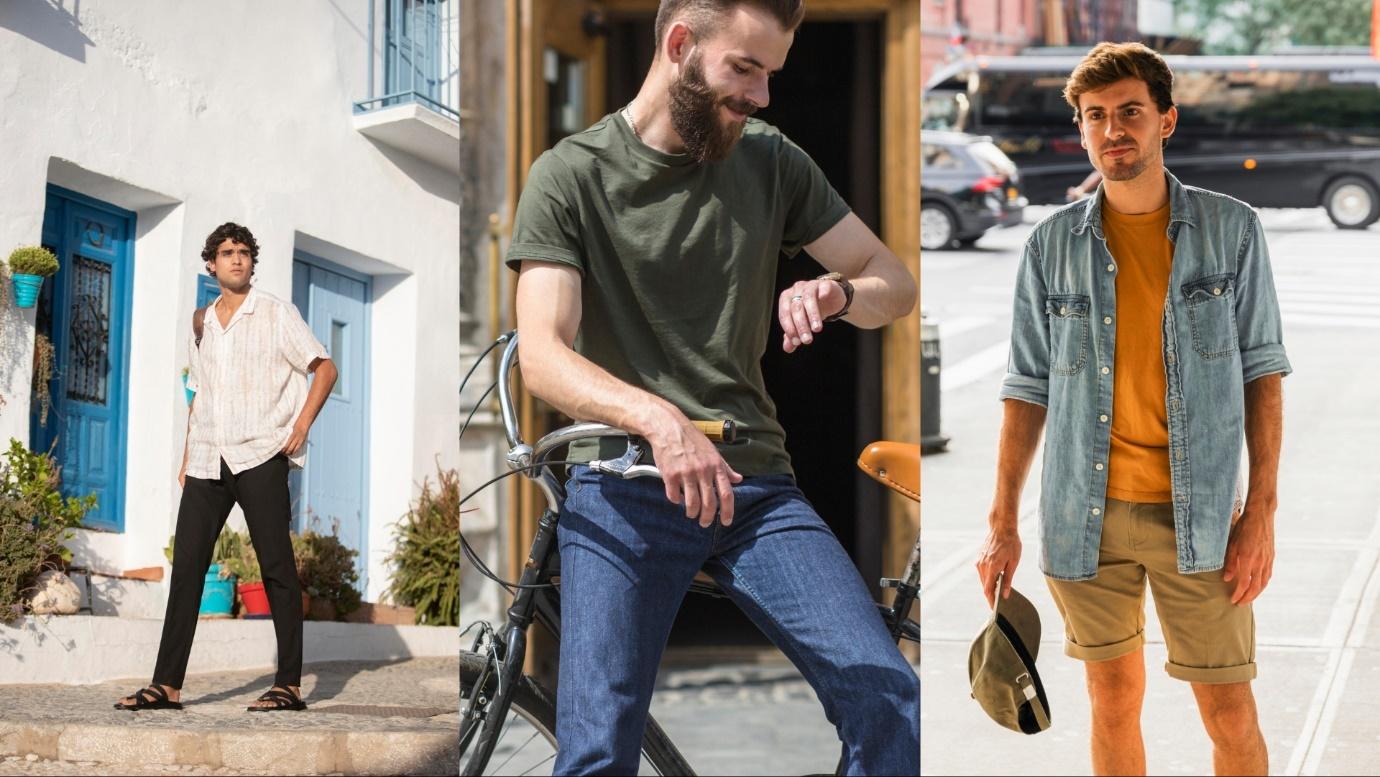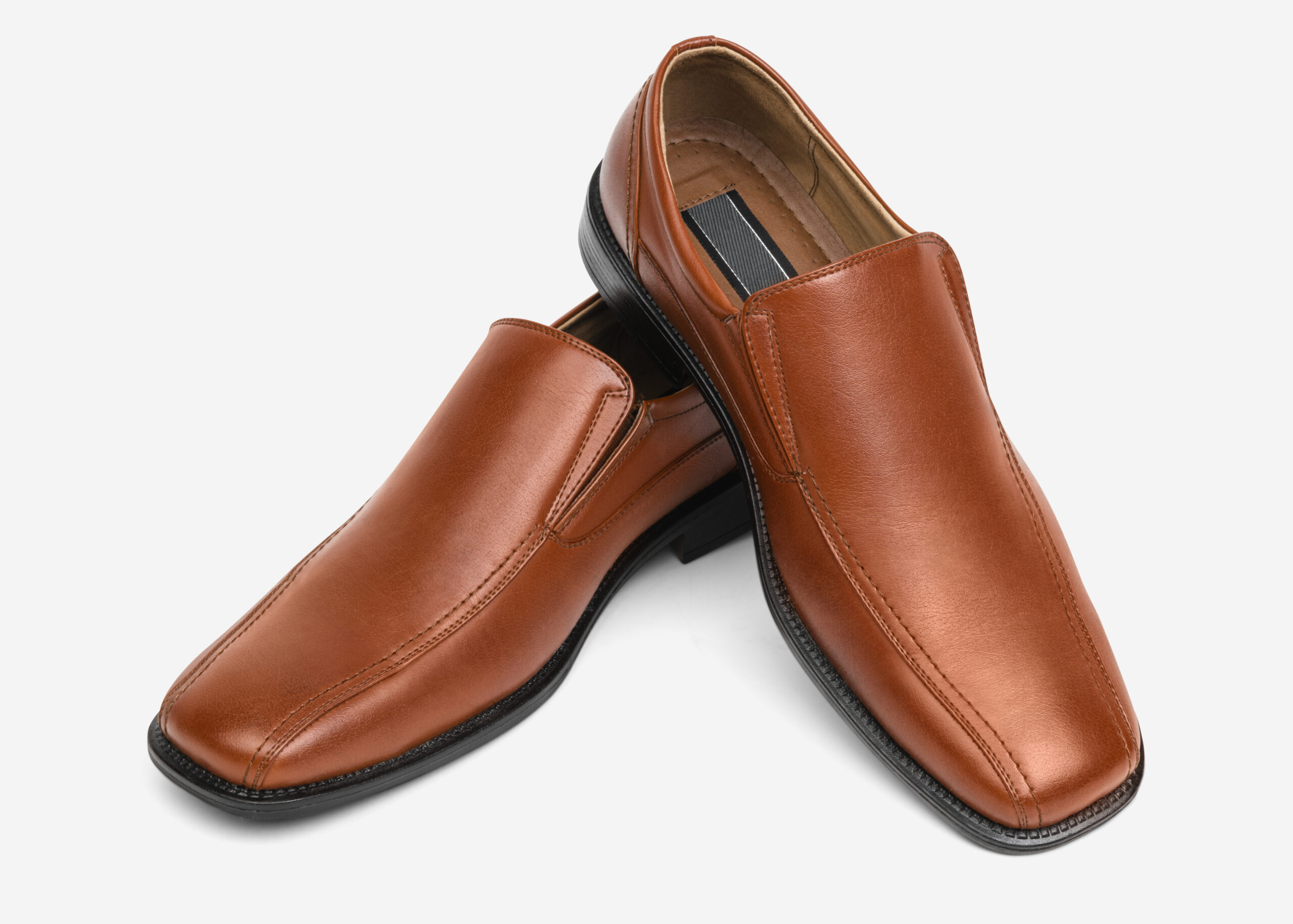This comprehensive guide will walk you through dressing for your body shape, ensuring the right fit and proportion, selecting suitable fabrics, dressing for height, weight, and muscle mass, exploring various clothing styles, accessorizing, mastering layering techniques, and achieving perfect color coordination.
Body Shape: Embrace Your Unique Physique
Understanding Body Shapes
Before diving into dressing tips, it’s essential to identify your body shape. The four common body shapes for men are:
- Rectangle Body Shape: Characterized by a balanced upper and lower body with minimal waist definition.
- Triangle Body Shape: Features broader shoulders and chest compared to the waist and hips.
- Inverted Triangle Body Shape: Boasts broader shoulders and chest with a narrower waist and hips.
- Oval Body Shape: Exhibits a more rounded midsection with relatively balanced shoulders and hips.
Fit and Proportion: The Key to a Sharp Look
Finding the Right Fit
When it comes to dressing well, the fit is everything. Regardless of body shape, well-fitted clothes can elevate your style instantly.
- Shirts: Ensure the shoulder seams align with your shoulders, and the sleeves end just before your wrists.
- Jackets: The jacket should contour to your body without pulling or bunching.
- Pants: Choose trousers that fit comfortably around your waist and hips and have the right length.
Fabric Selection: Dressing for Comfort and Style
Seasonal Fabrics
The choice of fabric can greatly impact your overall comfort and appearance, especially with changing seasons.
- Summer Fabrics: Opt for breathable and lightweight fabrics like cotton and linen.
- Winter Fabrics: Embrace warmer materials like wool and cashmere for insulation.
Occasion and Fabric
Matching the fabric with the occasion is essential for creating the right impression.
- Formal Events: Choose luxurious fabrics like silk or velvet for a sophisticated look.
- Casual Outings: Cotton and denim are great choices for a relaxed yet stylish vibe.
Dressing for Height: Elevate Your Stature
Dressing Tips for Shorter Men
Being on the shorter side doesn’t mean sacrificing style. Embrace these tips to appear taller.
- Opt for vertical stripes to elongate your silhouette.
- Avoid baggy clothing that can overwhelm your frame.
- Choose well-tailored clothing to create a streamlined look.

Dressing Tips for Taller Men
Tall men can embrace fashion while maintaining proportion.
- Experiment with different layering styles to add depth.
- Wear contrasting colors to break up the vertical lines of your body.
- Choose jackets and shirts with sleeves that reach the right length.

Dressing for Weight: Dress Sharp at Any Size
Dressing Tips for Slim Men
Slimmer men can create a more substantial appearance with these styling tips.
- Embrace layering to add volume to your frame.
- Opt for structured blazers to broaden the shoulders.
- Choose tops with patterns or prints to create visual interest.

Dressing Tips for Heavier Men
Men with a fuller figure can dress stylishly with confidence.
- Stick to dark-colored clothing for a slimming effect.
- Avoid overly loose or tight clothing; instead, opt for a tailored fit.
- Wear V-neck shirts to elongate the neck and create a leaner look.’

Dressing for Muscle Mass: Flaunt Your Physique
Emphasizing Muscle Mass
For those with a muscular build, dressing well can showcase your hard work.
- Choose fitted shirts that accentuate your chest and arms.
- Opt for straight-leg or slim-fit pants to compliment your frame.
- Embrace athleisure for a stylish and comfortable look.
Dealing with Tight Clothes
Muscular men might face challenges with tight-fitting clothing.
- Look for clothing with stretch fabrics to accommodate your muscles.
- Prioritize comfort and ease of movement when selecting outfits.
Clothing Styles: Unleash Your Fashion Sense
Classic Style
Classic style emphasizes timeless and versatile pieces.
- Embrace tailored suits and shirts for a polished appearance.
- Opt for neutral colors and traditional patterns.
- Invest in quality leather shoes and accessories.
Casual Style
Casual style is all about comfort without compromising on style.
- Embrace denim jeans and chinos paired with graphic tees or button-down shirts.
- Try out sneakers, loafers, or boat shoes for a laid-back vibe.
Accessorizing: Elevate Your Outfit
Watches
A well-chosen watch can elevate your outfit.
- Invest in classic and versatile watch styles like a stainless-steel watch.
- Consider a leather or fabric strap for a more casual look.

Belts
Belts not only hold your pants up but also serve as stylish accessories.
- Match the color of your belt with your shoes for a polished look.
- Experiment with different buckle styles to suit your outfit.

Sunglasses
Sunglasses not only protect your eyes but also add a touch of sophistication.
- Choose sunglasses that complement your face shape.
- Have both classic aviators and trendy designs in your collection.

Layering: Mastering the Art
Layering is not only stylish but also practical for colder seasons.
- Add a sweater or cardigan for insulation.
- Top it off with a jacket or coat to complete the look.
Color Coordination: Harmonizing Your Outfit
Understanding Color Theory
Understanding color coordination can help you create visually appealing outfits.
- Complementary colors lie opposite each other on the color wheel.
- Analogous colors are adjacent to each other and create a harmonious look.
Picking the Right Colors
Consider your skin tone and hair color when choosing clothing colors.
- Cooler skin tones may look better in blues and greens.
- Warmer skin tones may complement earthy tones like browns and oranges.
Conclusion
Dressing for your body type is not about following strict rules, but rather embracing your unique physique and style. By understanding your body shape, dressing for fit and proportion, selecting suitable fabrics, and experimenting with various clothing styles, accessorizing, layering, and color coordination, you can curate a wardrobe that reflects your personality and boosts your confidence.



